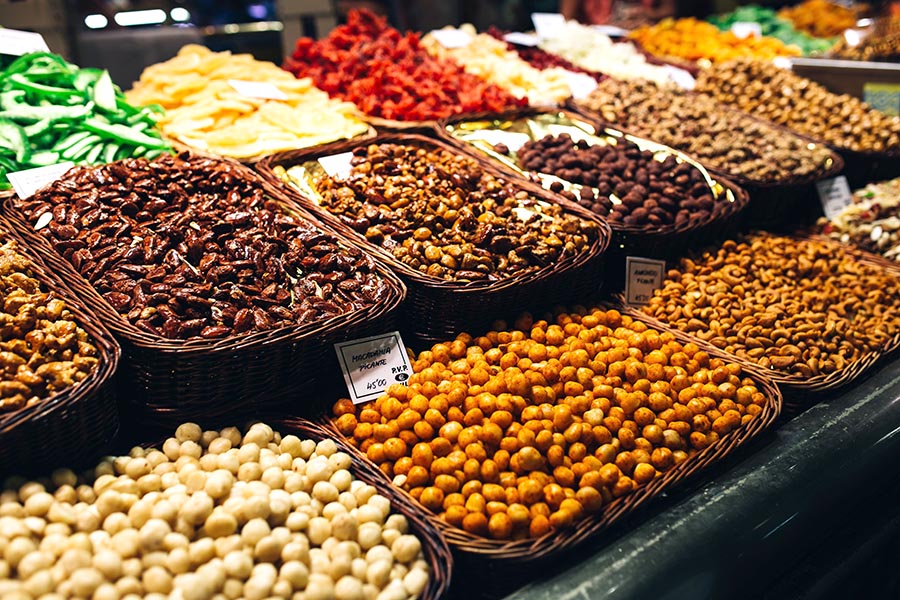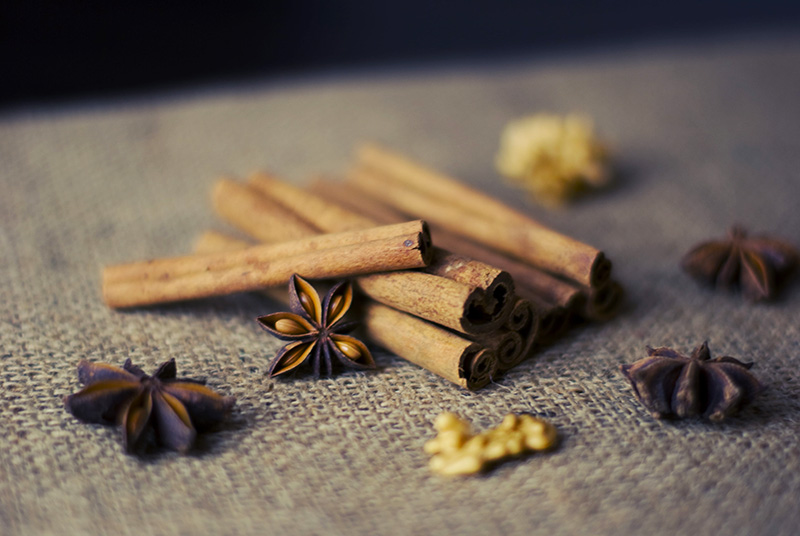Articles
Spices and seasonings in the cuisine of Al-Andalus I
Article theme: 2023, Al-Andalus, Culinary, History.
PART I
One of the characteristics of Andalusian cuisine was the use of spices and aromatic herbs, which gave the many recipes their own personality, while favouring the preservation of food. This is what the famous French Arabist Maxime Rodinson had to say on the subject:
“They helped to combat the smell of meats that were not very fresh and to preserve them. But it is also true that spicy cuisine referred to expensive ingredients; it was a rich cuisine; it thus satisfied the tendency towards conspicuous consumption, once analysed by Thorsen Veblen as characteristic of the “idle classes” throughout history”.
Even today, Arabic cuisine is still based on their use, and to this day, in the rich oriental gastronomy, spices are synonymous of good taste and variety.
Since ancient times, they have been prized for their magical-medicinal and taste properties. But they were not only used in cooking and pharmacopoeia, but also in body care and perfumery, as can be seen in the Ebers papyrus from Ancient Egypt, which as early as 1550 BC tells us about the numerous products used for embalming. There is also evidence that in China as far back as 2700 BC, cassia was used, a type of cinnamon, which is the one we almost always use today in our cooking, and which the Andalusians called Chinese cinnamon, to differentiate it from the so-called Ceylon cinnamon.
Trade
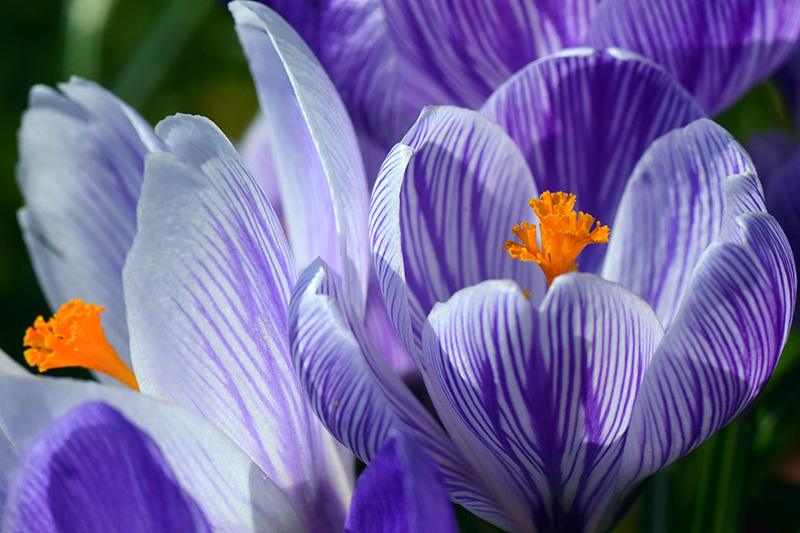
Due to the high esteem in which spices have always been held, even becoming a currency of exchange, as was the case with mustard and pepper until very recent times, it is only natural that a lucrative trade was established around them from ancient times. Sometimes they fetched a higher price than gold, as we have always heard about saffron (before the skyrocketing price of gold). In fact, the use of spices has always characterised the most refined and sumptuous cuisines because of the cost of obtaining them. According to a famous 13th century anonymous manuscript on Spanish-Maghrebi cuisine:
“The knowledge of the use of spices is the main basis of cooking dishes, because they are the foundation of cooking and on it it is built”.
Spices and aromatic products have always accompanied biblical traditions. It is said that the kings of the East brought gold, frankincense and myrrh on their journey to Bethlehem as a gift for the baby Jesus, while the Queen of Sheba sent Solomon gold, jewels and spices.
From ancient times, this trade forced the establishment of long routes to bring in these products, most of which came from the Far East. The Phoenicians, Greeks and Romans successively monopolised the spice trade. With the consolidation of the Islamic empire in the 8th and 9th centuries, the Arabs, experienced travellers, took over the trade in their turn, tracing new routes that linked East and West through the Indian Ocean, the Red Sea and the Persian Gulf, and inland routes through Iraq, Syria, Palestine, Upper Egypt and the Maghreb coast, until they reached the Andalusian ports of Málaga and Almería.
In the 10th to 12th centuries, it was the Jews who chartered the ships that were to supply Al-Andalus with spices. The goods were brought from Iraq, China, Yemen and India. But from the 13th century onwards, it was the Genoese, along with the Catalans, Florentines and Venetians, who led the trade.
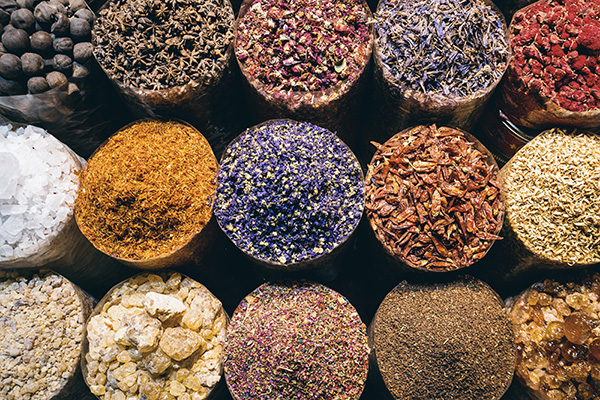
When they reached the lands of Al-Andalus, these spices were sold in the souks. Incidentally, the word azoka, or market in Basque, curiously comes from Arabic, and is a direct linguistic loan. There, among the narrow streets of the medinas of Cordoba, Toledo, Granada and Tudela, the markets, or souks, of the different guilds were established. These included the attarin, or perfumers and spice merchants. Galanga, cardamom, ginger, nutmeg, cloves and pepper, among many others, were sold in sacks or basins. But spices, as well as adding colour and aroma to dishes, also had the virtue of correcting the harmful effects of certain foods and curing certain ailments.
Dietetics
The science of dietetics was highly developed in the time of Al-Andalus, as an intrinsic part of food and gustatory pleasure. Numerous treatises and recipe books of the time spoke of the virtues and harmful effects of certain foods and how to correct them. This can be seen, for example, in the so-called Book of the Pillow, a pharmacopoeia treatise by the 11th century Toledo-born Ibn Wafid, as well as in the writings of Avenzoar, from the 11th-12th centuries, Averroes, from the 12th century, Ibn al-Khatib, from the 14th century and author of the famous treatise The Book of Hygiene, or al-Arbuli, from the 15th century.
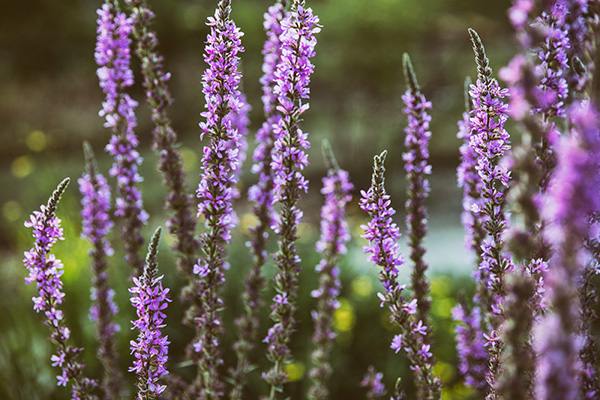
The Arab physicians and dieticians of the time were based on the theory of bodily humours, of Greco-Latin origin, but also of Hindu, Persian and even Chinese influence. Thus food, like organisms themselves, was of a hot, dry, wet or cold nature, and the eater was subject to the influence of phlegm (cold and wet), blood (hot and wet), black bile (cold and dry) or yellow bile (hot and dry). In fact, it is still said today that a person is phlegmatic when he is cold, or bilious when he has a bad temper. In French, it is said se faire de la bile, to express that a person worries excessively. It is also said of a person who is sanguine, when he is choleric or very active.
To these humoral characteristics were added the conditioning factors of age and season of the year, all of which were taken into account in the correct preparation of a person’s diet.
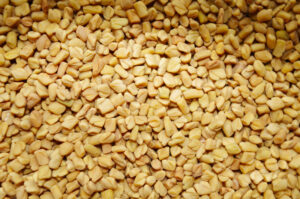
The Prophet Muhammad himself was an excellent dietician and hygienist of his time, i.e. the 7th century, and there are several books and treatises that deal with the so-called medicine of the Prophet, which in many cases fully coincides with the dictates of today’s traditional and alternative medicine. For example, the Prophet recommended drinking mead as an excellent tonic and antiseptic, as well as healing with aloe, garlic, and other substances less known in our culture, but used in Arabic and oriental cuisine, such as negrilla (Nigella sativa) and alhova (Trigonella foenum-graecum), also knowns as fenugreek. It is a seed with a strong flavour that is widely used in curries and in natural preparations to combat anorexia and lack of muscle tone, as it is a vegetable protein of high nutritional value.
These are some of the spices or aromatic herbs capable of correcting the harmful effects of some foods: according to Ibn al Awwam (Kitab al-Filaha, Book of Agriculture):
“Mint tones the stomach, restores the appetite and lifts the spirits. These properties are not very different from those attributed to it today. Ibn al-Awwam recommends serving it chopped and fresh on top of dishes at the time of serving.
Marjoram, on the other hand, is used as a garnish for fatty dishes and meat dishes, and prevents bad smells and fermentation.
Thyme neutralises the bad effects of cold and flatulent vegetables.
Caraway, from the Arabic al-karauiya, is used to accompany vegetable dishes, especially chard and cabbage, ‘because it improves the flavour of the dish, gives it flavour and keeps gas away from the vegetables’”.
Cumin, from the Arabic kammun, which appears in numerous recipes, is characterised, according to an anonymous 13th century manuscript, ‘by its ability to dissolve stomach upsets and by its digestibility’. In fact, it is not uncommon for this spice to be used to neutralise the flatulent effects of legumes and other foods.
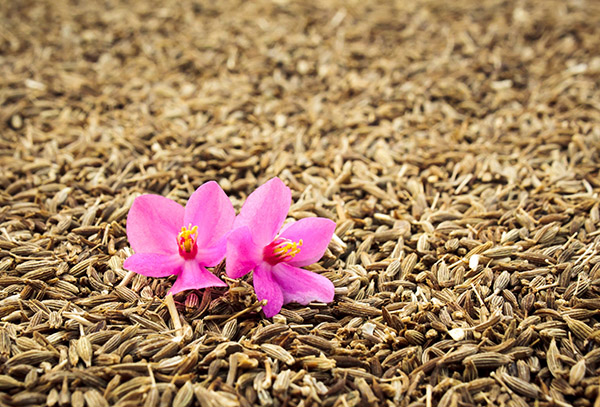
It is very interesting to note, indeed, that this spice has been very popular over the centuries, as can be seen in some medieval Christian recipe books, in which a dish called Alcamony (from ‘cumin’) appears. There is a 15th century Egyptian manuscript called ‘Kitab al-harb al masuq bayna lahm al-da’n wa hawadir al-suq‘ that mentions a recipe called Kammuniya, which probably has something to do with Spanish alcamonía. This is how the author of the book describes the delights of this cumin-heavy dish:
“The kammuniya, which opened to the hearts, shining in its qualities. Cauliflower waved over it, spices exhaled fragrant clouds over its meats and delicate kifta waved over its fats. It was accompanied by the patty and the thin, shiny steaks”.
Spices in the cuisine
It seems that pre-Islamic Arab societies, on the other hand, used hardly any spices, as did the Goths of Hispania and probably all the peoples of the North: the Basques, Asturians, Cantabrians and Galicians. In all probability, their cuisine was simple and elementary. The Bedouins of Arabia ate colostrum, clarified butter, grasshoppers, truffles, meat stews and bread soaked in curds. As we can see, an unrefined and very fatty diet. But they also relied on the consumption of dates, eating them in the form of cakes with flour and butter, or with milk and sugar, or with curd. With the arrival of Islam and the development of urban culture, the cuisine became much more refined. The travelling and restless spirit of the Muslims of the early Middle Ages, their desire for knowledge and their permeability towards other cultures, such as those of the East and Hellenism, led to a fabulous development in every sense of the word, and also from the gastronomic point of view, where curiosity and lack of prejudice prevailed.
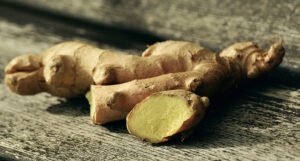
But returning to spices, which did not characterise pre-Islamic Arabic cuisine as we have seen, we see that the Koran itself only mentions ginger and camphor. It is also known that saffron, whose name comes from the Arabic az-zafaran, was widely used at that time, in the 7th century. It seems that as well as being used in cooking and for colouring, it was also used for perfuming the body.
In Al-Andalus, from the 8th century onwards, with the increase in maritime and land trade, spices, condiments and all kinds of new fruits and vegetables would give rise to a fabulous gastronomy. Some of the main spices and aromatic herbs that were introduced and acclimatised on our soil (some had already been used by the Romans, but were lost after the fall of the Empire) were ginger, cloves, galangal, nutmeg, cardamom, cumin, aniseed, long pepper, mace, caraway and coriander.
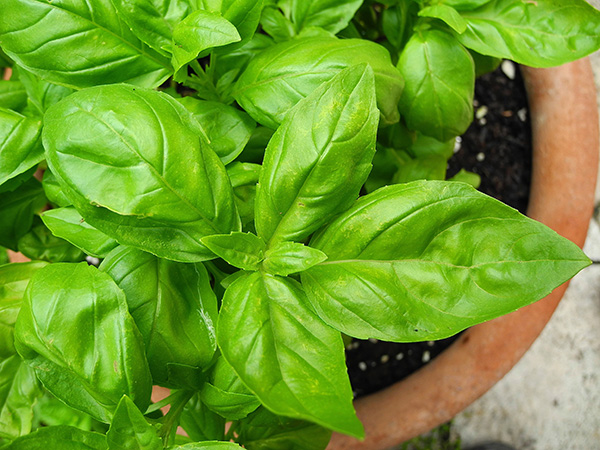
Aromatic herbs such as parsley, basil (another term of Arabic origin, al-habak), thyme, fennel, mint, juniper, rosemary, marjoram and lavender were also used. Other lesser-known products used today include rue leaves and cedar leaves, Indian tuberose, sandalwood, camphor, mastic, safflower and feverfew. And let’s not forget cinnamon, which not only flavoured desserts, but also many meat dishes.
It would seem that at any table worth its salt, there were dishes with aromatic plants such as tarragon, fennel and mint, which served to stimulate the appetite and perfume the breath. Another characteristic of spices was their power to prevent the bad smells caused by the consumption of raw garlic and onions, which are discouraged in Islam, especially when one has to attend the mosque. Cumin was one of them, but rue leaves, fresh coriander and parsley were also used for this purpose. But above all, spices were valued because they removed the smell of wine and beer, two fermented beverages that were very popular in Al-Andalus, not only among Jews and Christians, but also among Muslims, as evidenced by the recipes and chronicles of the time.
In this sense Ibn Luyun (14th century) said, without great modesty:
“The smell is concealed with cauliflower and cubeba, and after eating, with vinegar and coriander”.
The culinary culture of Al-Andalus, a refined and complex one.
Bibliography
Albarracín, J., Martínez, J. Medicina, farmacopea y magia en el “Misceláneo de Salomón”, Granada, 1987.
Al Razi, Abu Bakr Muhammad b. Zakariya, Libro de la introducción al arte de la medicina o “Isagoge”, trad. Vázquez de Benito, M. Salamanca, 1979.
Ben al-Jatib, Muhammad b. Abdallah, K., al-Wusul li-hifz al-sihha fi-l-fusul “Libro de la Higiene”, trad. trad. Vázquez de Benito, M. Salamanca, 1984.
Bolens, L., “La révolution agricole andalouse du XIe siècle”, Studia Islamica, XLVII, París, 1978.
Chalmeta, P., El señor del zoco en España, Madrid, 1973.
De La Granja, F., “La cocina arabigoandaluza según un manuscrito inédito: Fadalat al-Jiwan”, extracto de tesis, Madrid, 1960.
Eléxpuru, I. y Serrano, M., “Al-Andalus, magia y seducción culinarias”, Madrid, 1991.
Eléxpuru, I., “La cocina de al-Andalus”, Madrid, 1994.
García Sánchez, E., “Ibn al-Azraq: Uryuza sobre ciertas preferencias gastronómicas de los granadinos”, tirada aparte de Andalucía Islámica, I, pp.141-162, Granada, 1980.
Huici Miranda, A., Traducción española de un manuscrito anónimo del siglo XIII sobre la cocina hispano-magribí, Madrid, 1966.
Ibn al-Awam, Libro de Agricultura, trad. Banqueri, Madrid, 1802, edición facsímil, Madrid, 1988, I-II.
Ibn Bassal, Libro de Agricultura, trad. Millás Vallicrosa, M., Aziman, Tetuán, 1955.
Ibn Wafid, El Libro de la Almohada, trad. Álvarez de Morales, C., Toledo, 1981.
Marín, M., “Las plantas alimenticias y su utilización en una manuscrito oriental sobre alimentación y dietética”, Ciencias de la naturaleza en al-Andalus, I, Granada, 1990.
Millás Vallicrosa, J., “Los geóponos hispanoárabes”, Revista del Instituto egipcio de estudios islámicos en Madrid, vol. VI, fasc. 1-2, Madrid, 1957.


